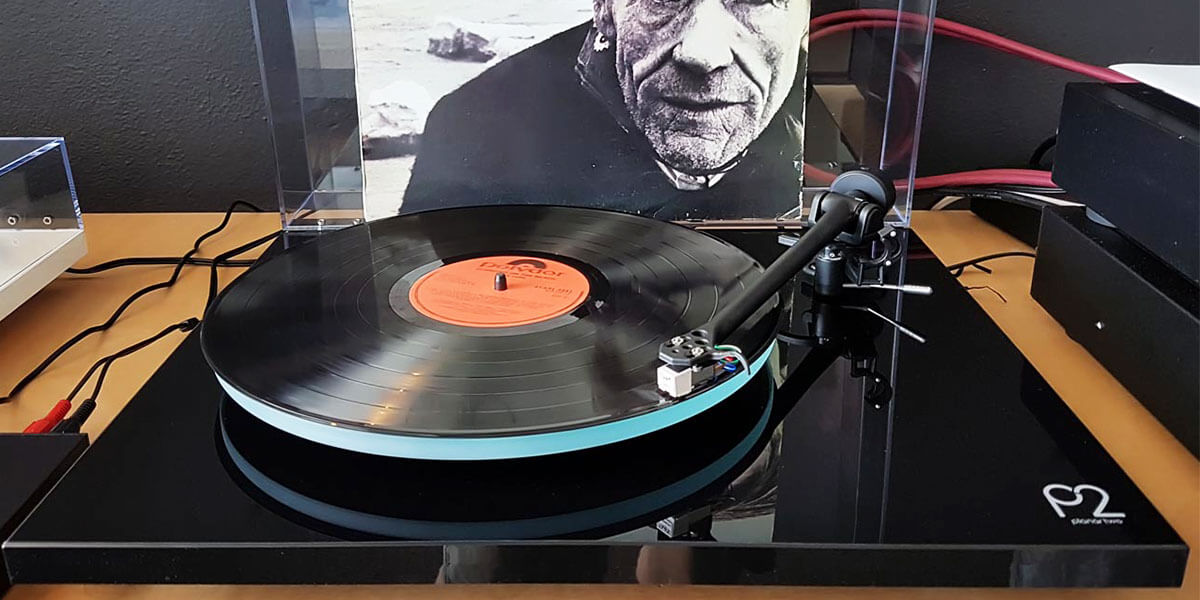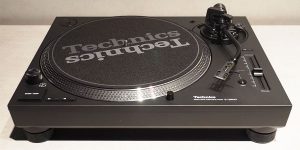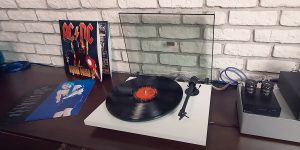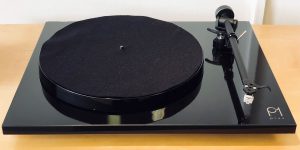Vinyl fans, true music lovers, have traditions and culture that you should be familiar with if you want to join their community. First, the basic principles are manual operation and belt drive. Therefore, in this review, I will introduce you to the selection in which we will look for the best belt-driven turntable of the classic type. Nothing extra or newfangled. And believe me, there are models for every budget. After all, some of you are just starting your acquaintance with analog sound, and some want to go to a more advanced level.
But first, let’s familiarize ourselves with some aspects that are also extremely important when choosing a vinyl record player and affect what you hear.
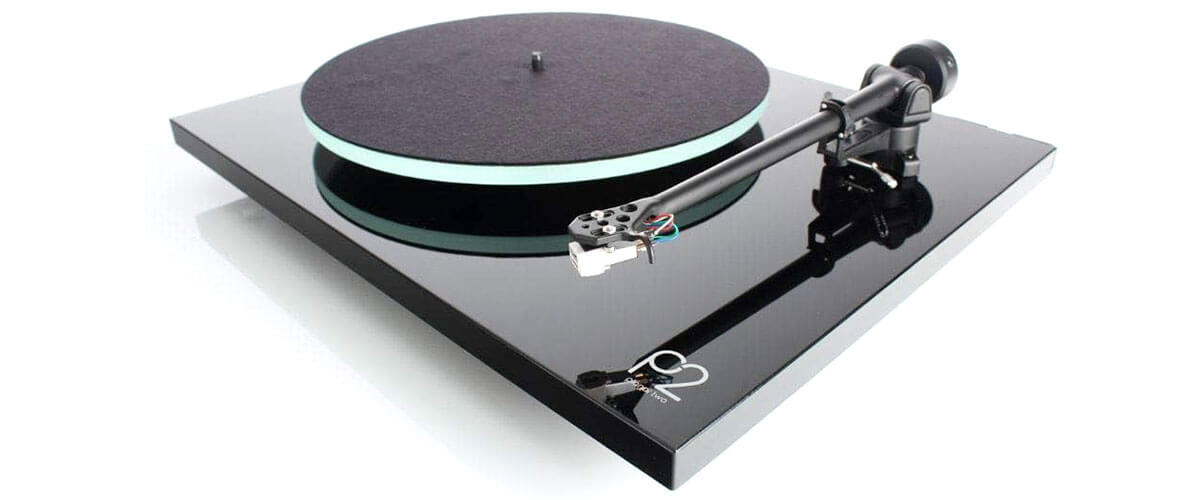
Belt drive turntables comparison table
| Name | Drive type | Operation type | Speeds | Phono Pre-Amp | Bluetooth | Review |
|---|---|---|---|---|---|---|
| REGA Planar 2 best overall | belt | semi-automatic | 33 1/3, 45 RPM | no | no | Review |
| Pro-Ject Debut Carbon EVO also great | belt | manual | 33 1/3, 45, 78 RPM | no | no | Review |
| Fluance RT85 under $500 | belt | manual | 33 1/3, 45 RPM | yes | yes | Review |
| Fluance RT81 budget | belt | manual | 33 1/3, 45 RPM | yes | no | Review |
| Music Hall MMF-9.3 premium pick | belt | manual | 33 1/3, 45 RPM | yes | no | Review |
What to look for when choosing a vinyl player
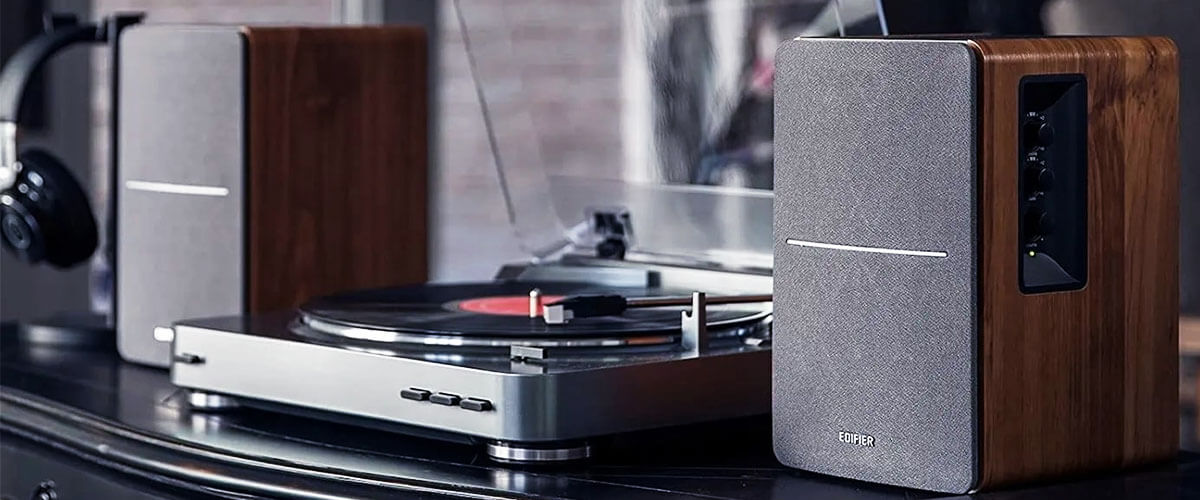
Platter material and design
Platter makes a huge difference when we talk about the size, weight, and material it is made of.
The heavier this part is, the better it will hold stability, thus helping the record sound smooth without needle skipping. This is especially true in the inexpensive segment, where chassis are often lightweight and can be susceptible to external vibrations.
Aluminum platters are the simplest. They are lightweight and can make a platter sound when spinning. Metal ones are more reliable but don’t provide a good grip on the mat and platter. So, glass and acrylic are considered the most optimal for vinyl. Also, pay attention to the size of the platter so that all your records fit on it completely.
Motor and belt quality
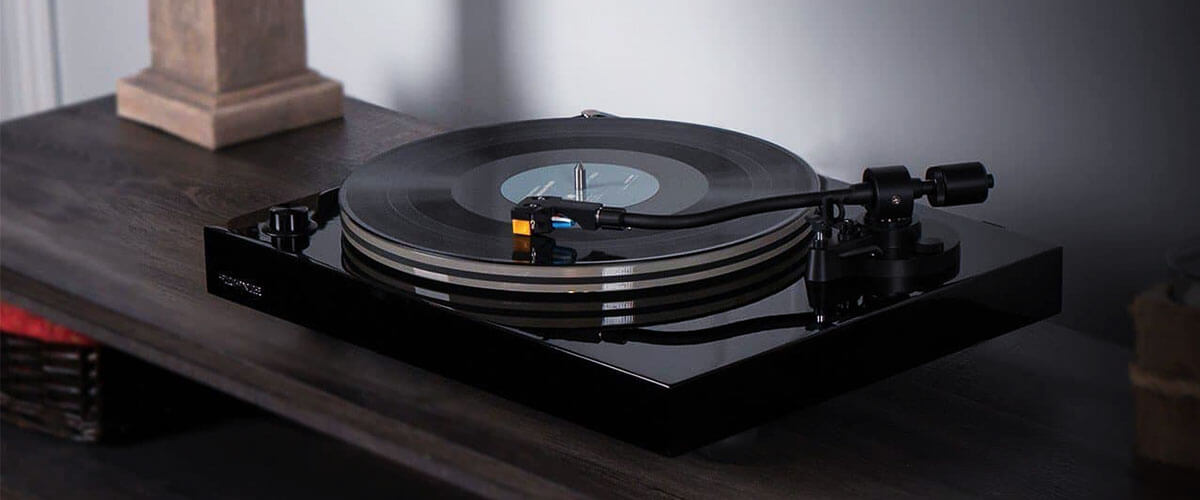
The quality of the motor is important to the sound, as many motors can make unwanted noise when running. That said, the motor must provide stable operation so that recordings sound smooth and do not slow down in the middle of listening.
Therefore, it is considered natural for analog sound to reduce motor noise and vibration by the belt. Accordingly, depending on its quality and wear period, you may notice changes in the sound over time. Thankfully, this part is easy to replace; you just need to monitor whether it has stretched.
Tonearm and cartridge specifications
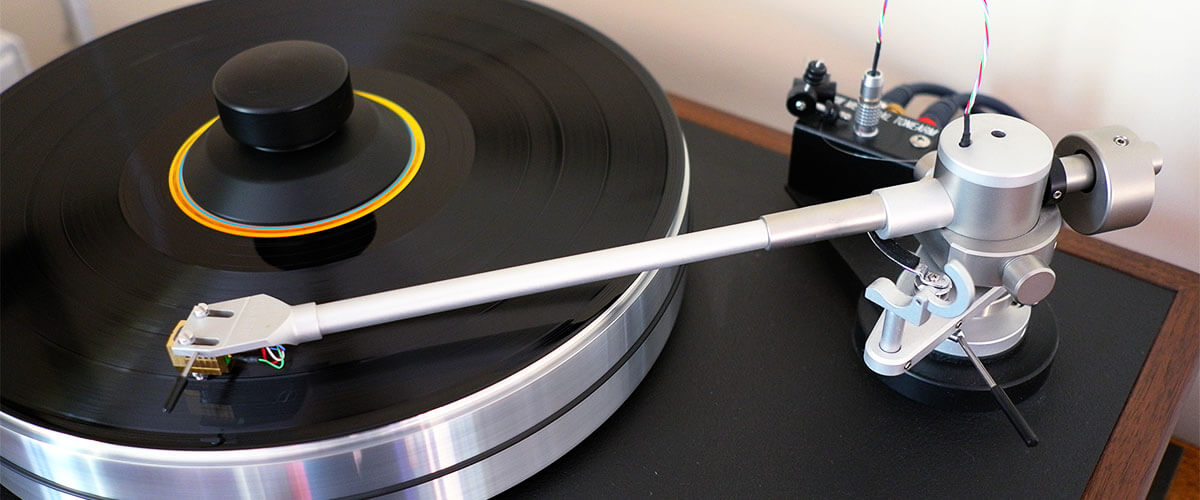
There are different tonearm shapes, and it’s important to understand how these affect the sound. Curved tonearms promote better positioning and movement of the needle along the grooves of the record. S-shaped or J-shaped tonearms are considered better than straight ones. However, the material they are made of should also be selected, as the part’s durability depends on it. Thus, aluminum tonearms are the easiest, but those using carbon fiber or fully carbon fiber are much better.
The choice of cartridge is also an important consideration. If it’s removable, you can always replace the factory pre-installed one with a better one (within the turntable’s capability). That said, the MM configuration is the most common, but if you can replace (or it’s already installed) the MC configuration cartridge, it’s audiophile grade. It won’t lose a single detail of the piece of music.
Vibration isolation and damping mechanisms
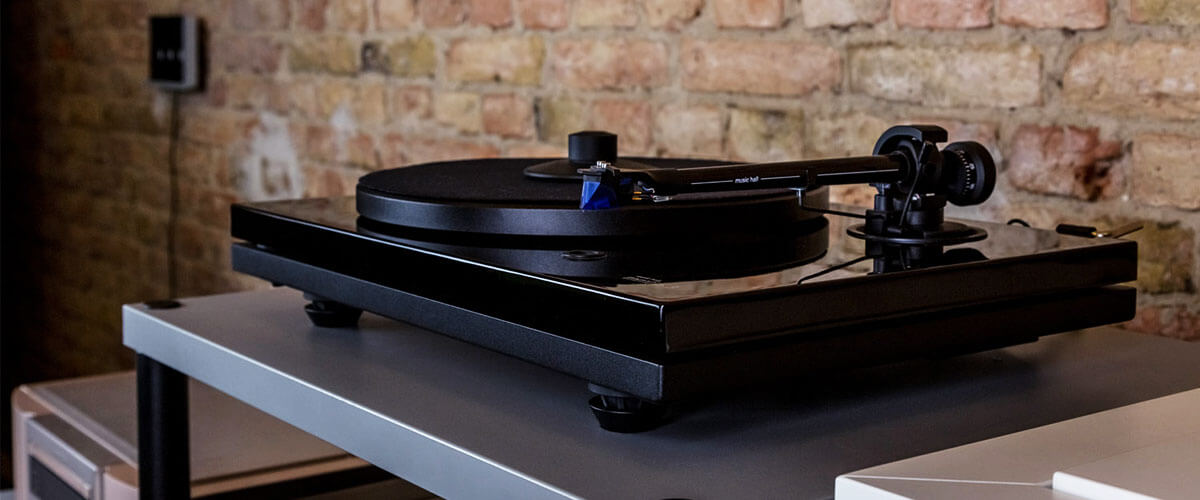
I mentioned before that the weight of the chassis is important. When the engine is running, the vibrations come from inside. If you place the turntable close to the speakers and are going to dance next to it, make sure the plinth is heavy enough (MDF, wood, but not plastic) and stands on as flat a surface as possible. It’s external vibrations. It saves a lot if the design uses adjustable anti-damping feet.
If your budget is limited and you can afford only an inexpensive and very light vinyl record player – do not hurry to get upset. Install the turntable on a shelf or in a cabinet that hangs/stands firmly in your room, put the speakers farther away, or even weigh the bottom.
Connectivity options
For traditional vinyl, it’s important to have RCA connectors if the preamp is built-in—line/Phono switching for an external phono stage and a mains cable connector (built-in ones are prone to breakage). That’s it.
So, if you’re interested in something like Bluetooth, this review does not include such models. Digitizing analog sound is considered bad manners.
Best belt-drive turntable reviews
REGA Planar 2 – best overall

If we proceed from the fact that the optimal turntable is a turntable that combines affordable (but not cheap) cost, quality, and good potential for further upgrade, then I choose Rega Planar 2 as the leader of my review. Obviously, the premium Music Hall MMF-9.3, which you will meet in this rating, is superior to this model in many ways. Still, I am focused on a buyer with average capabilities in general.
So, the Planar 2, the owner of 33 and 45 RPM speeds, manual and belt drive, has a hard plinth in two colors, a 12.12-pound acrylic gloss and walnut-effect laminated plinth, and an 11mm self-locking brass bearing. Combined with the improved anti-vibration feet compared to simpler turntables in the Planar lineup, stability for such a small (relatively) weight is pretty good. However, the 24-volt motor, which the manufacturer heavily touts, is a bit of a letdown at the start, and you can hear its sound. As it accelerated, under-record sounds, it didn’t bother me, and overall, I was very pleased with what I heard. Apparently, the company’s EBLT belt does the trick. But you must remove the platter when you want to change the speed; there is no button to switch it.
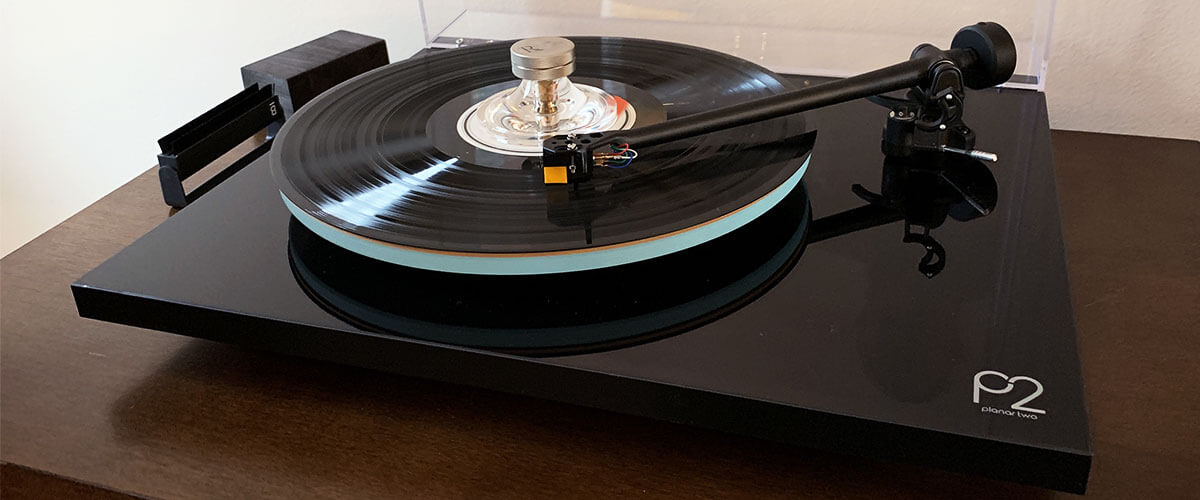
One of the very good things is the float glass ‘Optiwhite’ 10mm platter. It moves incredibly smoothly, and you won’t need to change it. The RB220 straight tonearm, fitted with a removable Rega Carbon MM cartridge, is standard for the Rega range. Nothing special, but I can’t say anything outright bad, either. But if possible, I always advise you to replace the cartridge with an Ortofon as much as possible. It greatly improves the sound of any turntable.
In its pristine condition, the Rega Planar 2 has good basic data and can be used right out of the box. It has a good, stable sound, keeping the frequency balance and authenticity of the instruments. When listening to old records, I got a pretty comprehensive picture of the details; it doesn’t turn the melody into a mess. And with the addition of an external preamp and cartridge replacement, you get a turntable that is quite comparable to more expensive models. Simple design, incredibly easy assembly, and installation will suit any user, even without experience. So, I confidently award Planar 2 the title of the best belt-driven turntable. If you want to get a traditional turntable right away and not think about replacing it for years, this is it.
Key specs
- Drive type: belt.
- Operation type: semi-automatic.
- Speeds, RPM: 33 1/3, 45.
- Phono Pre-Amp: no.
- Bluetooth: no.
- USB: no.
- Aux input: no.
Pros
- Optimal price/quality/upgradeability ratio.
- No tuning is required; it sounds good right out of the box.
- Float glass ‘Optiwhite’ 10mm platter.
- The cartridge can be replaced.
- Excellent sound, even with pre-installed parts.
Cons
- Motor sound is audible at the start.
- Need to remove the platter to change speed.
Pro-Ject Debut Carbon EVO – also great
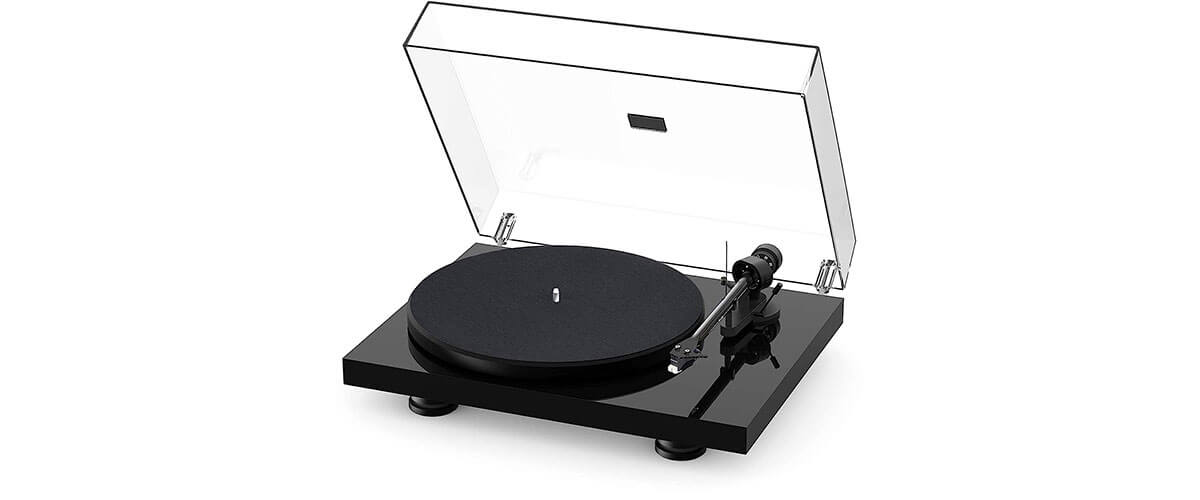
For those who like to get more and pay less, I can suggest an excellent alternative turntable: the Pro-Ject Debut Carbon EVO. In fact, it is very similar to the Rega Planar 2. It, too, has no built-in preamplifier (which is considered a good thing because an external phono stage is always better), a simple design, controls, a direct tonearm with MM cartridge, and an almost identical weight—12.35 pounds. However, Rega is considered a more high-end brand.
In the Debut Carbon EVO collection, you will find 9 cabinet colors for every taste. The motor is also under the platter, but there is a button to change speeds. It is located under the chassis, and on the one hand, this idea is good because it is aesthetically pleasing, and you don’t have to touch the surface with your hands. On the other hand, it is not visible, and I forgot at what speed I listened to the record, so I had to click several times. Speaking of a platter weighing 3.7 pounds. In cheaper Pro-Ject models, it was metal and made noise, according to user comments. The platter is made of TPE (thermoplastic elastomer) in the Carbon EVO. It is heavy and much quieter but inferior to the Planar 2’s glass platter.
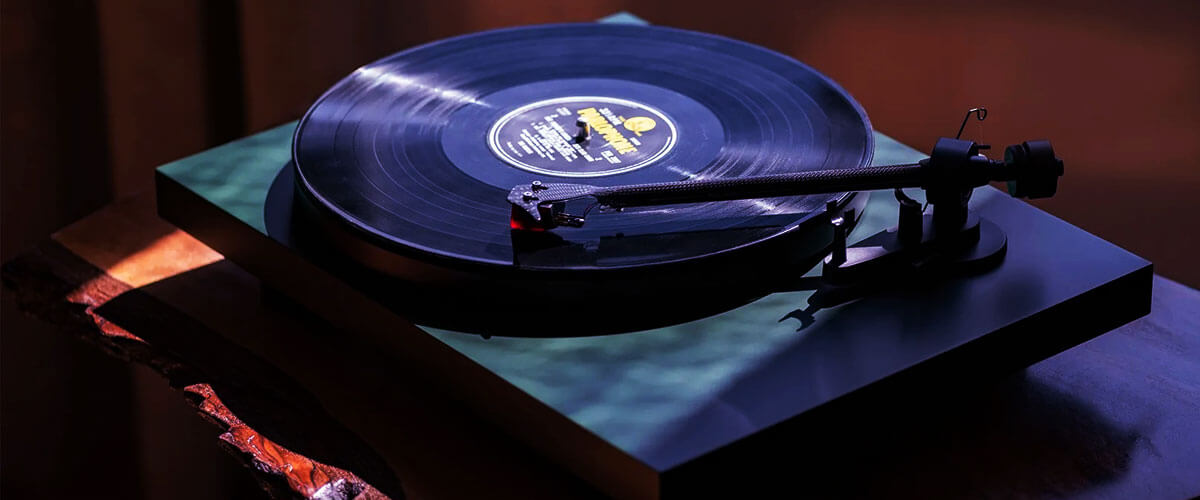
This model’s tonearm is made of carbon, the finest material available today. The Ortofon 2M Red cartridge is simply beautiful. I usually recommend replacing cheaper variants with it. So, in terms of upgrading, you only need to buy a quality external preamp. Although, if you really want, you can replace the turntable with an even cooler one in the future.
One of the most popular belt-drive turntables in the middle segment, Pro-Ject Debut Carbon EVO, is worthy of your attention. It may not be a high-end brand and looks simpler than the Rega Planar 2, but it offers great raw data. It has 3 spin speeds, a great Ortofon 2M Red cartridge, an improved TP platter, and gold-plated RCA connectors. Although I found it less stable (the chassis is quite a bit worse at keeping balance) than the rating leader, it still sounds great. Vocals stand out in a well-layered musical background, and I got enough warmth for jazz, classic rock, and pop.
Key specs
- Drive type: belt.
- Operation type: manual.
- Speeds, RPM: 33 1/3, 45, 78.
- Phono Pre-Amp: no.
- Bluetooth: no.
- USB: no.
- Aux input: no.
Pros
- 9 different body color options.
- Excellent Ortofon 2M Red cartridge.
- Carbon fiber tonearm.
- Gold-plated RCA connectors.
- Three spin speeds: 33, 45, and 78 RPM.
Cons
- The chassis maintains a poor balance compared to Rega Planar 2, but it is difficult to notice.
- The button for switching speeds is located on the bottom of the chassis. This is inconvenient.
- The platter made of TPE is inferior to the glass one of Rega Planar 2.
Fluance RT85 – under $500
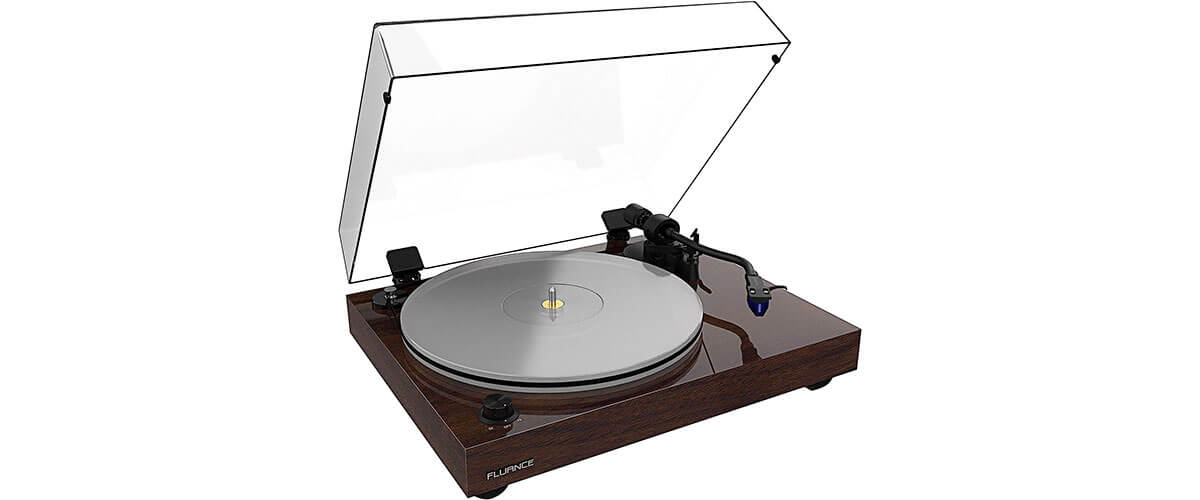
The next belt-drive record player belongs to Fluance’s famous Reference lineup in the budget and mid-range segment, and it’s right on the cost frontier. Fluance RT85, a sub-$500 turntable, is unique because the cartridge it is equipped with – Ortofon 2M Blue – is half its price. The base upgrade specs are also pretty good. And it doesn’t have a built-in preamp, either.
The chassis is made of MDF and weighs 16.75 pounds. The company’s unique, company-designed three rubberized feet in an unusual spike-type shape do just fine against external vibrations. The motor also has additional silicone insulation, so I noticed no extra noise during my testing.
The belt here is outside the platter, so you can see the degree of its wear without lifting the plate. And the speeds (only 2 of them) are switched by a convenient switch, touching which you do not paw the surface of the case. The Acrylic platter has remarkable balance and grip, and that’s a great bonus at this price. Among the differences between the Rega Planar 2 and Pro-Ject Debut Carbon EVO is the S-shaped tonearm. It’s more accurate than the straight ones, but it’s made of aluminum. And I’ll categorize this as a compromise, as it doesn’t inspire confidence at all; it’s so light and flimsy. I also didn’t really like the auto-stop function, as it doesn’t work properly. Or rather, it works, and then it doesn’t.
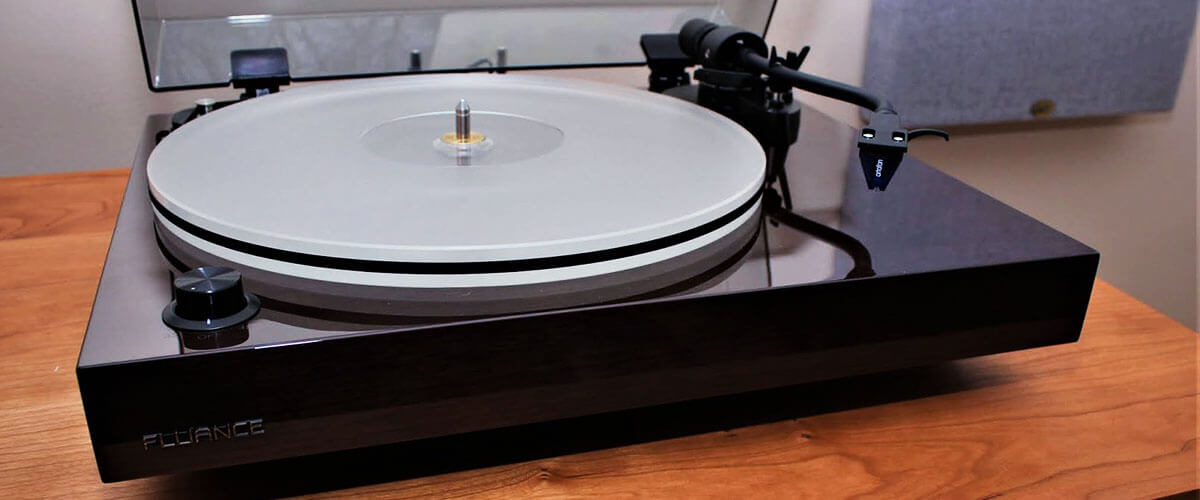
On the other hand, the Ortofon 2M Blue cartridge is super-quality and doesn’t need to be replaced even over time. In general, just choose a good phono-preamp, and the turntable will sound rich in colors and reveal many nuances of long-familiar melodies.
For the segment of turntables under $500, Fluance RT85 is a unique turntable. It has the basic data of a classic record player on a level with more expensive models: good balance against vibrations, an acrylic platter, silicone motor insulation, an S-shaped tonearm, speed switching by buttons (not by dragging the belt), gold-plated RCA connectors, and a beautiful Ortofon 2M cartridge.
But at this price, pitfalls are to be expected. I would include a poorly working auto-stop function and a fragile aluminum tonearm that risks not lasting long if manually operated.
Key specs
- Drive type: belt.
- Operation type: manual.
- Speeds, RPM: 33 1/3, 45.
- Phono Pre-Amp: yes.
- Bluetooth: yes.
- USB: no.
- Aux input: no.
Pros
- Good weight and three rubber feet provide excellent balance.
- Speeds are switched with a convenient knob.
- Acrylic platter.
- Tonearm has an S-shape.
- Ortofon 2M Blue cartridge costs half the price of the turntable and does not require replacement.
- Gold-plated RCA connectors.
Cons
- Tonearm is flimsy.
- Autostop function works or not.
- Only 2 rotation speeds.
Fluance RT81 – budget
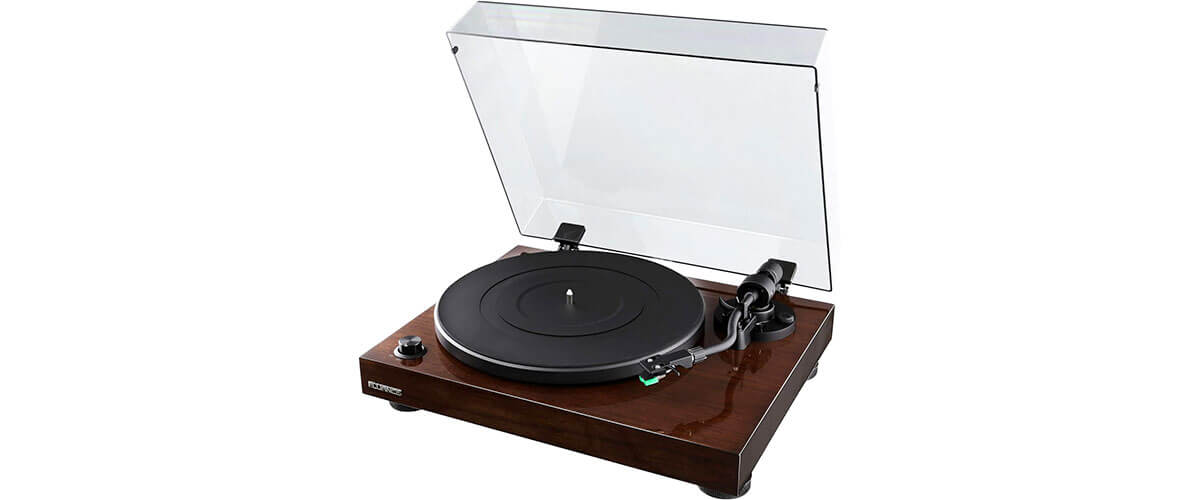
Well, we’ve reached the most budget-friendly option of my review. There are always options for anyone who wants to understand, love, and be a fan of analog sound. The sub-$300 turntable is a simpler version of the previous review model. The Fluance RT81 is inferior to the RT85 in many ways, but it has the potential to upgrade as well. And that means that spending a penny over time can help you achieve a higher level of sound.
At first glance, there are no differences between the two models. The same MDF cabinet has three legs, an S-shaped tonearm, and a speed switch (there are 2 of them here, too). But they saved on something, didn’t they? First, the RT81 is a little lighter (14.1 pounds), but even this weight exceeds those of the leaders of the selection Rega Planar 2 and Pro-Ject Debut Carbon EVO. The platter is made of aluminum, producing a slight cymbal ringing sound when operated. In principle, you can’t hear it at high volume, but it is considered a sign of cheapness (which is normal in this case). There is a built-in preamp, which, of course, will save you money at first. But its quality is not so good.
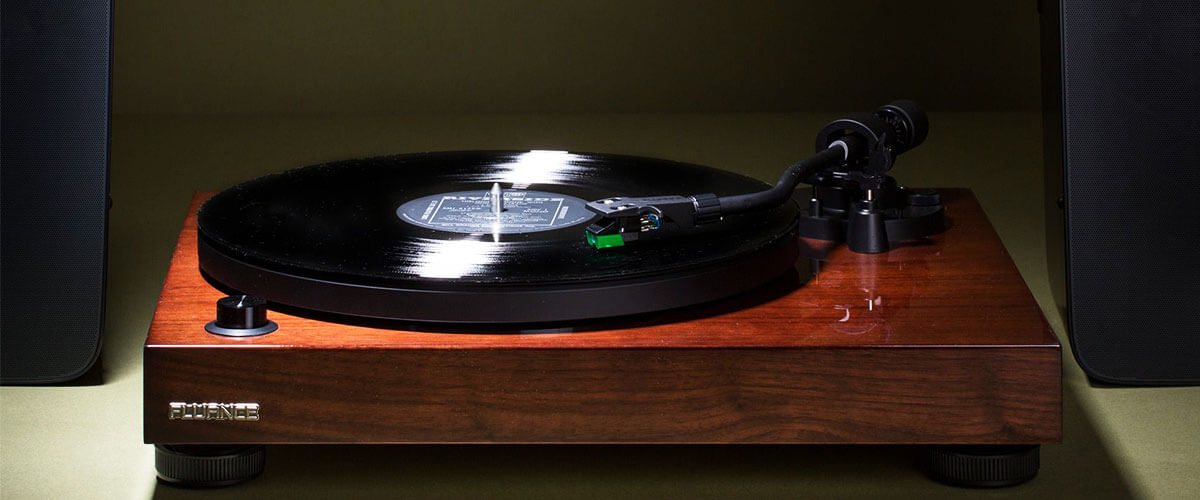
Of course, the tonearm is aluminum, but it has a simpler Audio-Technica AT95E cartridge. Its only advantage is that getting a replacement cartridge is very common and easy. But it is better to buy something even simple from Ortofon.
Fluance RT81 is the best budget belt-drive turntable because even for beginners, it will be comfortable and easy to use (the tonearm is factory-tuned). But even if you know music but don’t have the opportunity to buy expensive equipment right away, this is a great base to get a good turntable over time, as you have a nice heavy chassis with anti-vibration feet and an S-shaped tonearm. The built-in preamp sounds flat and muddy compared to the sound of external phono stages, but it will save money initially. In general, as I said, the base is there, but it will require investment if you want to get cool analog equipment in the end. I would also expect the belt to wear out quickly. But that’s quite a solvable problem.
Key specs
- Drive type: belt.
- Operation type: manual.
- Speeds, RPM: 33 1/3, 45.
- Phono Pre-Amp: yes.
- Bluetooth: no.
- USB: no.
- Aux input: no.
Pros
- Good stability and anti-vibration feet like the Fluance RT85.
- The Audio-Technica AT95E cartridge is easy to find on sale and replace.
- The built-in preamplifier will save money at first.
Cons
- The platter and tonearm are aluminum.
- The platter makes a ringing sound when operated.
- The AT95E cartridge is simple and does not fulfill the potential of the turntable.
- The built-in preamplifier sounds flat and muddy.
- The motor belt wears out quickly.
Music Hall MMF-9.3 – premium pick
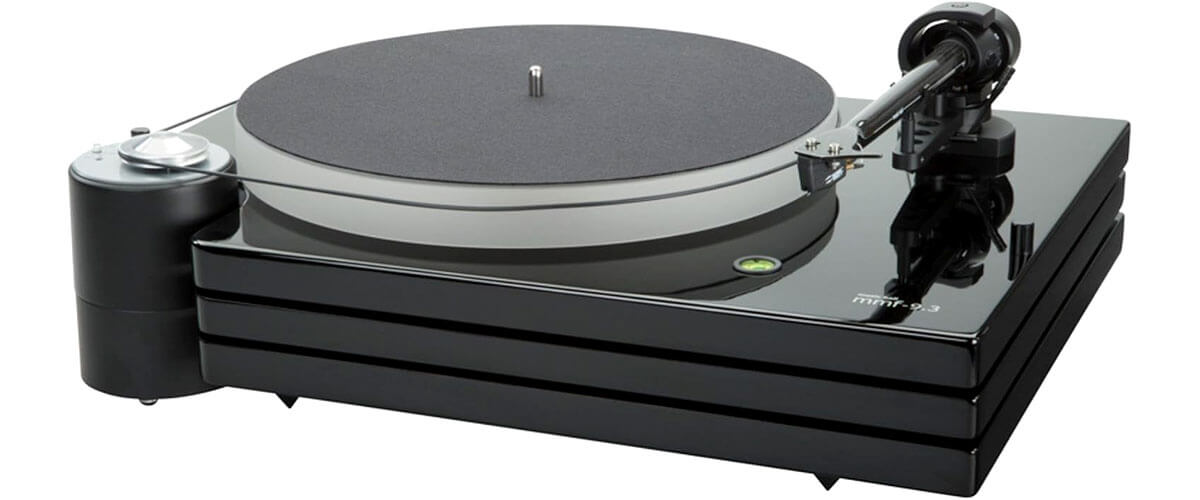
Finally, the premium turntable is in my rating. I won’t even compare it with others, apart from the fact that it is a belt-driven manual model with no built-in preamplifier. Like the selection’s leaders, Rega Planar 2 and Pro-Ject Debut Carbon EVO, it has a straight tonearm. But the cost of several thousand dollars speaks volumes, don’t you agree? For those who are not used to saving money—let’s go!
The design of Music Hall MMF-9.3 is very unusual. The chassis consists of three layers and weighs 40 pounds. Do I need to explain the advantages of such a design? All my words about the “fairly anti-vibration design” have now fallen to dust. This is real stability. The motor is completely separate from the base and sits on its cylindrical base (just look at the photo of it). Even the feet are arranged so they won’t scratch the surface they are mounted on. Put it on the floor, bounce to Nirvana, Smells like teen spirit, and your record will stay in place and spin unchanged. The platter is expectedly made of acrylic, which is the most optimal and 1 inch thick. Have you seen this extraordinarily thin and durable strap? There are no words; it’s a luxury.
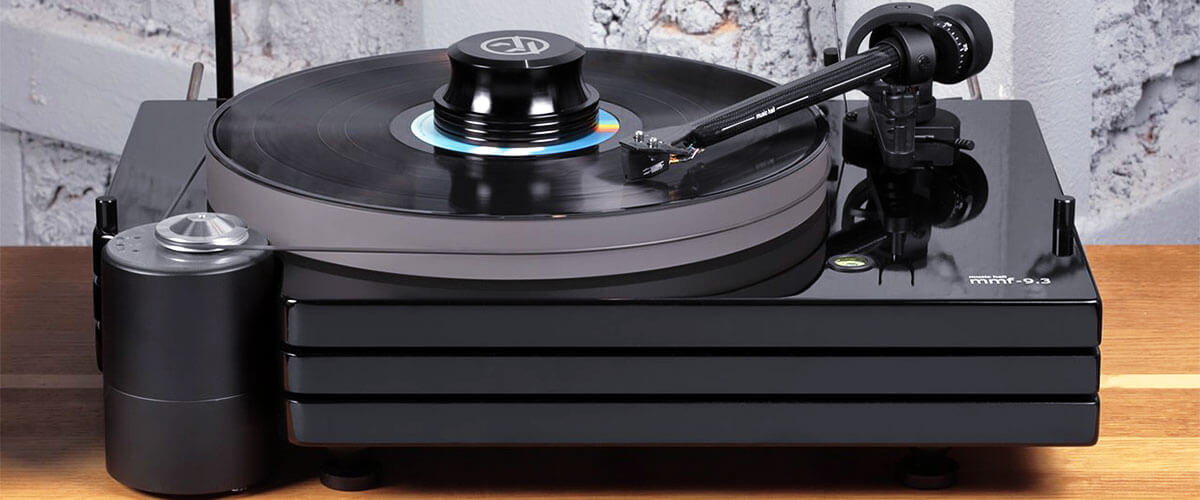
The tonearm is straight but carbon fiber and features the stunning optional Goldring Eroica LX moving coil cartridge and Gyger II linear contact stylus. It extracts every subtle nuance; it’s hard to compare in any turntable previously introduced. It feels like you’re right there with the musicians and the vocalist. You can also customize the tonearm thanks to the VTA adjustment. All in all, this model is for serious people with knowledge and a professional approach.
Music Hall MMF-9.3 is a premium choice for true audiophiles, combining modern, unusual design, excellent anti-vibration construction, and simply stunning sound, thanks to expensive components such as an acrylic platter, quarry tonearm, and expensive Goldring Eroica LX cartridge. You won’t find any flaws here unless you like listening to old 78 RPM records; it’s not here.
Key specs
- Drive type: belt.
- Operation type: manual.
- Speeds, RPM: 33 1/3, 45.
- Phono Pre-Amp: yes.
- Bluetooth: no.
- USB: no.
- Aux input: no.
Pros
- Weighing 40 pounds, triple plinth, anti-scratch feet – perfect balance.
- Carbon fiber tonearm with adjustable VTA.
- Absolutely silent operation.
- The Goldring Eroica LX cartridge costs over $700.
- A non-resonant acrylic disk that is 1 inch thick.
- Nuanced, realistic sound, as if you were there with the musicians.
Cons
- Straight tonearm.
- Only 2 rotation speeds.

